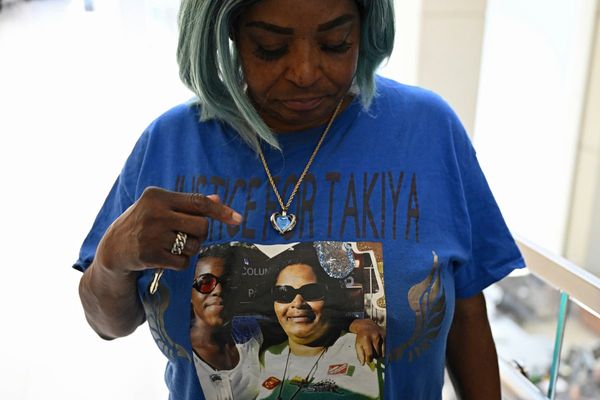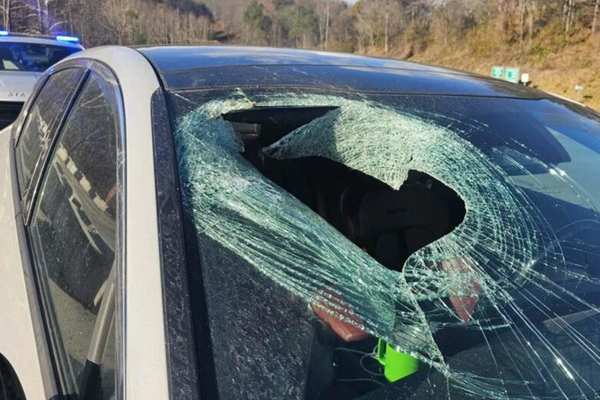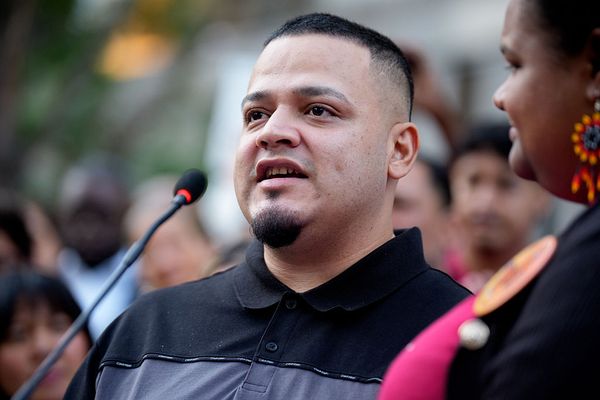
Neo-Nazis gathered outside the New South Wales parliament on Saturday, with black-clad men holding an anti-Jewish lobby banner and chanting a Hitler Youth slogan.
In the aftermath, politicians, activists and Jewish groups have been left shocked. The NSW police commissioner, Mal Lanyon, has said that while police had allowed the protest, neither he nor the NSW premier knew it was taking place, and blamed a breakdown in communication.
As the fallout over the demonstration continues, questions are being raised about what the police could have done to stop the rally going ahead – and whether they need more powers to do so.
Could police have done anything to stop the rally going ahead?
A major point of contention has been why the police accepted the group’s application to hold the protest. The group submitted what is known as a form 1 – or notice to hold a public assembly – which would provide them immunity from being charged under the Summary Offences Act. This includes offences like obstructing traffic.
The deputy police commissioner Peter Thurtell, who has revealed he did know about the protest ahead of time, has said the police did not have legal grounds to oppose the protest.
Prof Simon Rice, a University of Sydney law expert, says there is no prescribed criteria for police opposing a form 1. When they do, it tends to be on community or public safety grounds. Rice says the police could have argued that safety extends to safety from vilifying speech.
But he says there is a tricky balance to be struck: “There is a problem if police pre-emptively decide what protesters might say could be vilifying.
“On the other hand, if they’re confident something unlawful is going to happen, then we could expect them to act on that.”
Josh Pallas, a legal director at Climate Defenders Australia, agrees there could have been a public safety argument to be made in rejecting the protest. He says comments from the head of Asio, Mike Burgess, just last week could have formed a reasonable base to do so.
Burgess said during a speech to the Lowy Institute that he was worried about “violent propaganda and the growing likelihood these things will prompt spontaneous violence” from the group that organised Saturday’s protest.
On Saturday afternoon the premier, Chris Minns, said the process that allowed the rally to go ahead would be reviewed.
Could police have done anything to disband the protest?
Rice says police were limited in what they could do to stop the protest on the spot.
There are laws against the incitement of violence on the basis of race, religious beliefs and sexual orientation. This year the government controversially criminalised incitement of racial hatred by expanding 93ZA in the Crimes Act.
Timothy Roberts, the president of the NSW Council for Civil Liberties, said: “If there ever was a time to use these laws, it was over the weekend, yet NSW police chose not to.”
But Rice says the banner – which said “Abolish the Jewish Lobby” – was written in a way that was unlikely to reach the threshold for charges under vilification laws. Or if it did, it could be defendable in court as a political statement.
Protesters also chanted the Hitler Youth phrase “blood and honour”. Rice says it wouldn’t be unusual for the police to charge members of the group retrospectively.
“You couldn’t expect police to make an on-the-spot decision under 93ZA,” he says. “It’s outside their capacity to do it on the spot which is why it’s done after the event.”
Last year, on 26 January, police stopped a group of neo-Nazis – who included about 60 hooded men – on a Sydney train. Six people were arrested and 55 were issued a rail infringement notice for offensive behaviour. The Australian neo-Nazi leader Thomas Sewell, who was there, was filmed being served by officers with a legal order banning him from attending any Australia Day events in the city.
Do we need more laws to stop these protests?
Minns has flagged giving police more powers to shut down racist and hateful demonstrations. But advocates remain sceptical that is the answer.
The Greens’ justice spokesperson, Sue Higginson, says: “NSW police already have enormous powers to stop and disband public gatherings. They didn’t use them in this instance. That’s not a gap in the law – that’s a failure of judgment and leadership. The premier’s response should be to demand accountability, not to make our democracy smaller.
“We cannot simply arrest our way out of every problem, and the Greens will continue to hold this government to account with their lazy approach to complex issues.”
Roberts also warns that laws further eroding civil liberties would “be playing right into the neo-Nazis’ hands”.
Minns has also reportedly flagged following a German law that bans Nazi slogans, such as the Hitler Youth phrase “blood and honour”, from being used in public.
Levi West, a counter-terrorism expert at the Australian National University, warns that the group would probably just adapt and change their strategy so they didn’t break any new law.
“It’s made people get creative in how they communicate their allegiance to those ideas,” he says.
He says rather than a kneejerk reaction, there needs to be a more well-thought-out response to “the complex social problems” that are driving people to join the groups in the first place.
“There doesn’t seem to be a strategic response in Australia,” he says. “In the absence of a strategy, then all we’re going to do is keep reacting to headlines and then keep platforming the groups.”
Jack Eltis, who submitted the form 1 application for Saturday’s rally on behalf of “White Australia, formerly the National Socialist Network”, claimed the group received “paid and free advice” from constitutional and criminal lawyers and barristers who “support what we’re doing”.
They were advised that the banner they were proposing to display didn’t meet the threshold for hate speech laws, “which ironically we were protesting”, Eltis said on Tuesday.







